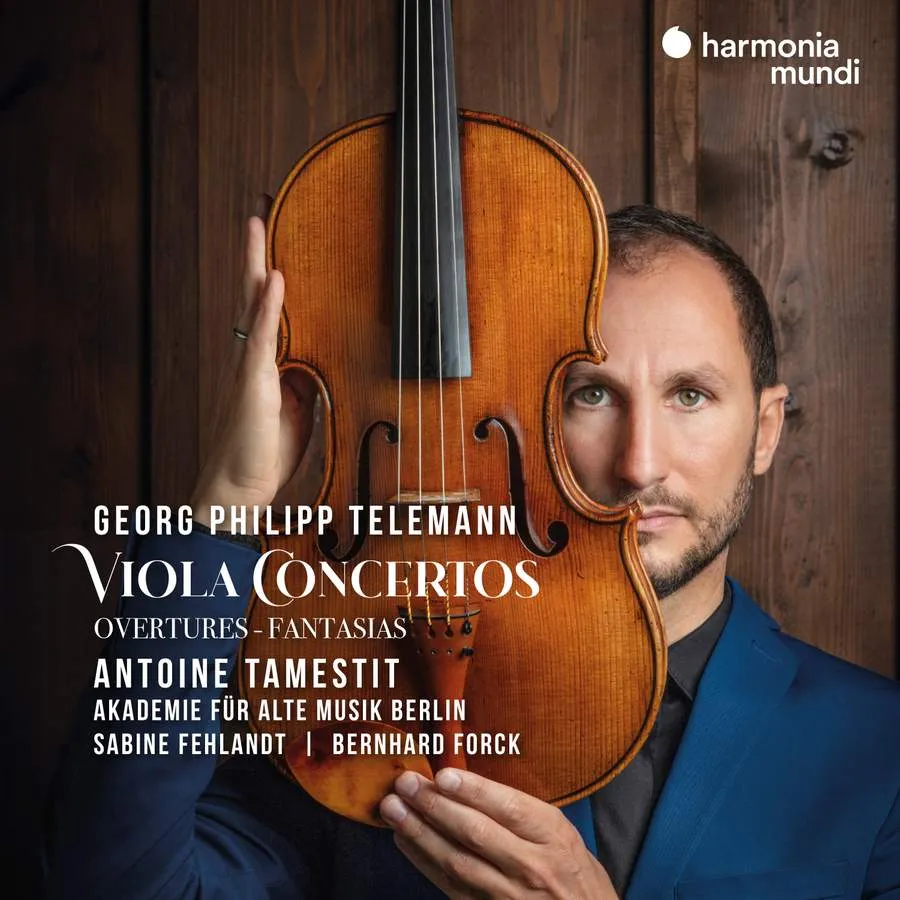
Telemann Viola Concerto, TWV 51:G9; Double Viola Concerto, TWV 52:G3*; Overture Suites, TWV 55:B8 & 55:g2; Fantasias for Solo Violin Nos 1 & 2 (arr. viola); Sonata en Canon in D minor, TWV 40:121* Antoine Tamestit (viola), * Sabine Fehlandt (violin); Akademie für Alte Musik Berlin/Bernhard Forck Harmonia Mundi HMM 902342 61:30 mins
Telemann’s Viola Concerto is one of his best-loved compositions. There were few such works in the 18th century featuring the viola as a solo instrument and Telemann’s may have been the first. The other concerto on the disc is for two solo stringed instruments of a similar pitch to the viola, but described as violettes. The rest of the programme features two of the composer’s 12 Fantasias for solo violin, transposed to suit the viola, one of several canonic sonatas or Canons mélodieux and two ouverture-suites for strings. The Ouverture burlesque, TWV 55:B8, illustrates figures from the Italian commedia dell’arte, while the title of the other, La Changeante, TWV 55:g2, is more obscure, but may be indicative of a different key for each of its movements.
Antoine Tamestit’s celebration of Telemann’s viola writing, and the characterful vignettes which provide indelible colour to his orchestral suites, is an evenly sustained delight. The four movements of the Viola Concerto reveal the instrument in a true solo role, sometimes without string support, at others providing unison contrast. An enharmonic change at the conclusion of the third movement is, perhaps, especially arresting in this largely Italianate piece.
While Telemann’s self-confessed diffidence in writing concertos ill reflects his ability to produce many wonderful examples, no such paradox exists where his orchestral suites are concerned. He loved the form and continued to add to his vast storehouse of them almost to the end of his life. Akademie für Alte Musik Berlin, under its leader Bernhard Forck, does them full justice.
Nicholas Anderson
More reviews
Sergiu Celibidache conducts Schubert’s Symphonies Nos 3 & 9
Sándor Végh conducts Schubert’s Symphonies Nos 1-4
Sergiu Celibidache conducts Mozart’s Symphonies Nos 36 & 38
Beethoven’s Symphony No. 9 conducted by Robert Shaw
Masaaki Suzuki conducts Stravinsky’s Pulcinella Suite; Apollon Musagète and Concerto in D